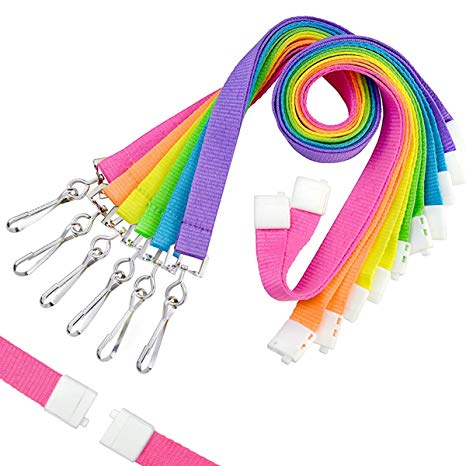There’s nothing like a well-designed school lanyard to make students, faculty, and staff feel like they’re a part of something that’s bigger than themselves.
Whether these lanyards are used for IDs, badges, promotions, or events, paying special attention to the design can make a big difference in the overall experience of the wearer.
In this guide, we’re sharing with you the important considerations that can help you design school lanyards that can go a long way towards boosting campus morale. Let’s get started!
The material can make a big difference.
Lanyards can come in different materials. The most common, however, are polyester and nylon imprinted lanyards. These are known to provide the best value considering their durability and design flexibility.
Other options include:
● Polyethylene terephthalate (PET)
● Polypropylene
● Satin
● Silk
● Cotton
The material is perhaps the most important consideration – even more important than the design itself. This will determine how well the logos and text will stick or retain their quality after frequent use, so choose carefully.
Detail is king, but keep things simple.
Everyone appreciates design that suggests a great attention to detail. That doesn’t mean that you should go overboard with ostentatious features, however. When it comes to designing a custom lanyard for your school, it’s best to stick to something that looks attractive yet still gets the message across. One good rule of thumb is to strike a balance between bold and minimal. For example, if you’re going with a bold color, pair it up with simplistic font. Additionally, you may want to stick to one or two different font styles to maintain a professional and uncluttered look, especially since lanyards are only typically ⅜-inch or 1-inch wide.
Choose the right colors.
While most schools only use colored lanyards that are inspired from the school’s logo, it doesn’t hurt to incorporate other colors as well, especially if the goal is to create specific emotional effects.
As an example, you can hand out yellow lanyards for students during cheer competitions because they induce a feeling of warmth and energy. Orange lanyards are also a good option for festivals because they create a festive mood, as well as increase levels of enthusiasm. When used properly, colors can be a powerful thing. This makes them another important consideration
when effectively designing school lanyards.
Different events can call for different designs.
It’s often a good idea to have uniquely-designed lanyards for concerts, competitions, festivals, and fun runs. You can even hit two birds with one stone by combining pleasing aesthetics with practicality.
Custom lanyards can help keep track of who’s who, as well as identify which people have special privileges. The simplest way to use lanyards for crowded school events is to color-code them. Blue lanyards can be for the stage crew, white lanyards are for the VIP guests, and so on. Just make sure that you prohibit non-essential participants from wearing their own lanyards to prevent confusion.
Complete the design with custom attachments.
Different lanyard features and attachments can create different effects. This is important not just for the design, but also for the practical use of the lanyard. Examples of attachments include:
● Black swivel J-hook
● Silver metal keyring
● Metal lobster clip
● Rubber O-ring
● Metal bulldog clip
● Badge holder
The type of attachment you choose will largely depend on what the lanyards will be used for. For your school, we recommend having lanyards with different attachments to provide students, faculty, and staff the option of choosing what’s most suitable for them.
Variety is the spice of life, so make sure to offer different options for lanyard designs, materials, and features. With the tips we’ve shared in this post, you should have a better idea of how to strategically design your school lanyards while striking a balance between purpose and quality design.
